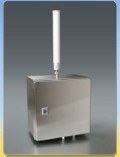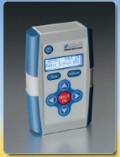Emergency Shut In System
When a gas leak occurs or fire breaks out how can field personnel respond safely? Aging wells are frequently fitted with hydraulic control systems, Sub-Surface Safety Valves (SSSVs) and Surface Safety Valves (SSVs). These are held open by a hydraulic control system typically operating at around 3000psi.The hydraulic control system senses upstream and downstream pressures and triggers on high and low levels. Whenever an over-pressure or under-pressure condition occurs the well safely and automatically shuts in. In the event of fire, a fusible hydraulic loop over the Christmas tree vents the pressure causing automatic shut in.
But this does not account for all emergency situations… For example, when there is a gas leak a manual shutin operation is required. Gas leaks are not uncommon and where Hydrogen Sulphide is present they are toxic. Concentrations of H2S above 0.03ppm are dangerous and above 10ppm potentially lethal in minutes. Typically hydraulic control systems include a manual shut in push button located 30-50m from the well head. Dispatching an operator to activate this is common practice, but requires the operator to approach a hazardous situation to an uncomfortably close distance.
Wireless Measurement’s Emergency Shut In System complements the hydraulic control system with a highly effective, self-contained, radio-control mechanism for shut in procedures. In principle it operates like a television remote control enabling an operator to shut in a well from up to 1km away, reducing risks to personnel and speeding up the emergency response. Operators can approach from upwind avoiding any rise of exposure to a potential toxicor explosive gas cloud.
ESIS - Simply Safer
ESIS is available now and suits all brownfield sites where hydraulic SSSVs are in place. Contact Us for further details.



